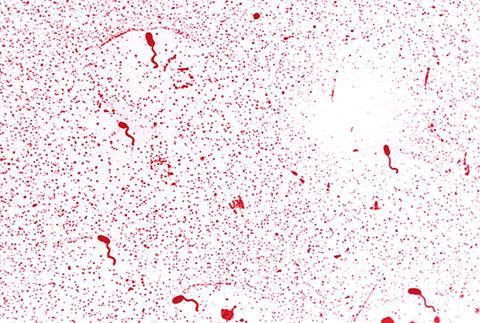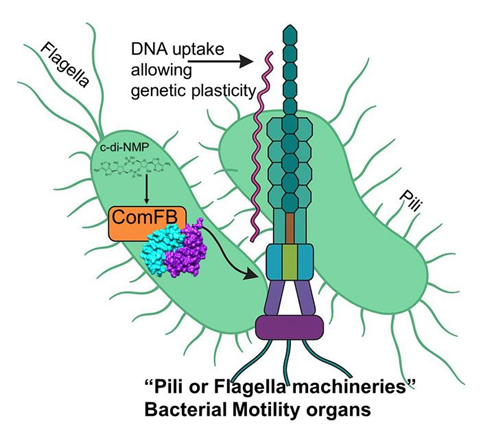Bacteria are constantly moving by help of motility organs called flagella or pili to colonize new niches. Also, bacteria can exchange information, like “speaking to each other”, and thus acquire new abilities through the exchange of DNA materials.

These motility organs play important roles in DNA uptake to exchange genetic information between different bacteria, allowing what’s so-called genomic plasticity. Therefore, bacterial motility organs contribute to bacterial pathogenicity, colonizing hosts, biofilm formation and spreading of antibiotics resistance.
READ MORE: Scientists probe mechanism of robust motility in flagellated bacteria
In joint studies, scientists at Heinrich Heine University Düsseldorf (HHU) and University of Tübingen, as well as Gießen University, Freiburg University, Max Planck Institute for Biology Tübingen, US National Institutes of Health, and New Jersey Medical School, have discovered a new family of signaling proteins, widespread in the bacterial kingdom and contributing to regulating bacterial motility and DNA uptake mechanisms. The researchers reported their finding in two publications in the journals Cell Discovery and Proceedings of the National Academy of Sciences (PNAS).
Messenger molecules
In these two studies, the research team led by Professor Dr Khaled Selim (Institute of Phototrophic Microbiology at HHU and Tübingen Cluster of Excellence CMFI) revealed that the second messenger molecules (c-di-GMP and c-di-AMP), together with the newly discovered ComFB receptor protein, regulates both bacterial motility and DNA uptake, therefore possibly contributing to bacterial pathogenicity.
PhD student Sherihan Samir, the first author of both publications: “The ability of different ComFB proteins from various bacteria to bind and precisely integrate the motility/DNA uptake signal(s) is reported by the second messenger di-nucleotides (c-di-GMP and c-di-AMP).” These characteristics were found in cyanobacteria, Bacillus subtilis and Vibrio cholerae, the causative agent of Cholera outbreak.

Prof. Selim: “c-di-AMP belongs to one of the relatively newly discovered class of ‘cyclic dinucleotide-type second messengers,’ whose cellular functions are not yet fully understood. In these studies, we show that the ComFB proteins sense c-di-AMP and additionally c-di-GMP and are essential for regulating the natural competence and bacterial motility.” The term “natural competence” describes the ability of bacterial cells to uptake DNA molecules and integrate them into their own genome to exchange the genetic information between each other. This process, for example, contributes mainly for spreading antibiotic resistance from initially only a few bacteria to entire populations, and also across different species boundaries.
It is still unclear which other groups of bacteria—besides the bacteria studied—also use this mechanism. “If pathogenic bacteria with clinical relevance also use it, this could pave the way for new strategies to fight multi-resistant bacteria,” Selim emphasizes.
Topics
- Bacillus subtilis
- Bacteria
- Early Career Research
- Freiburg University
- genomic plasticity
- Gießen University
- Heinrich Heine University Düsseldorf
- Khaled Selim
- Max Planck Institute for Biology Tübingen
- motility
- New Jersey Medical School
- One Health
- Proteomics & Enzymology
- Research News
- Sherihan Samir
- UK & Rest of Europe
- University of Tübingen
- US National Institutes of Health
- USA & Canada
- Vibrio cholerae







No comments yet